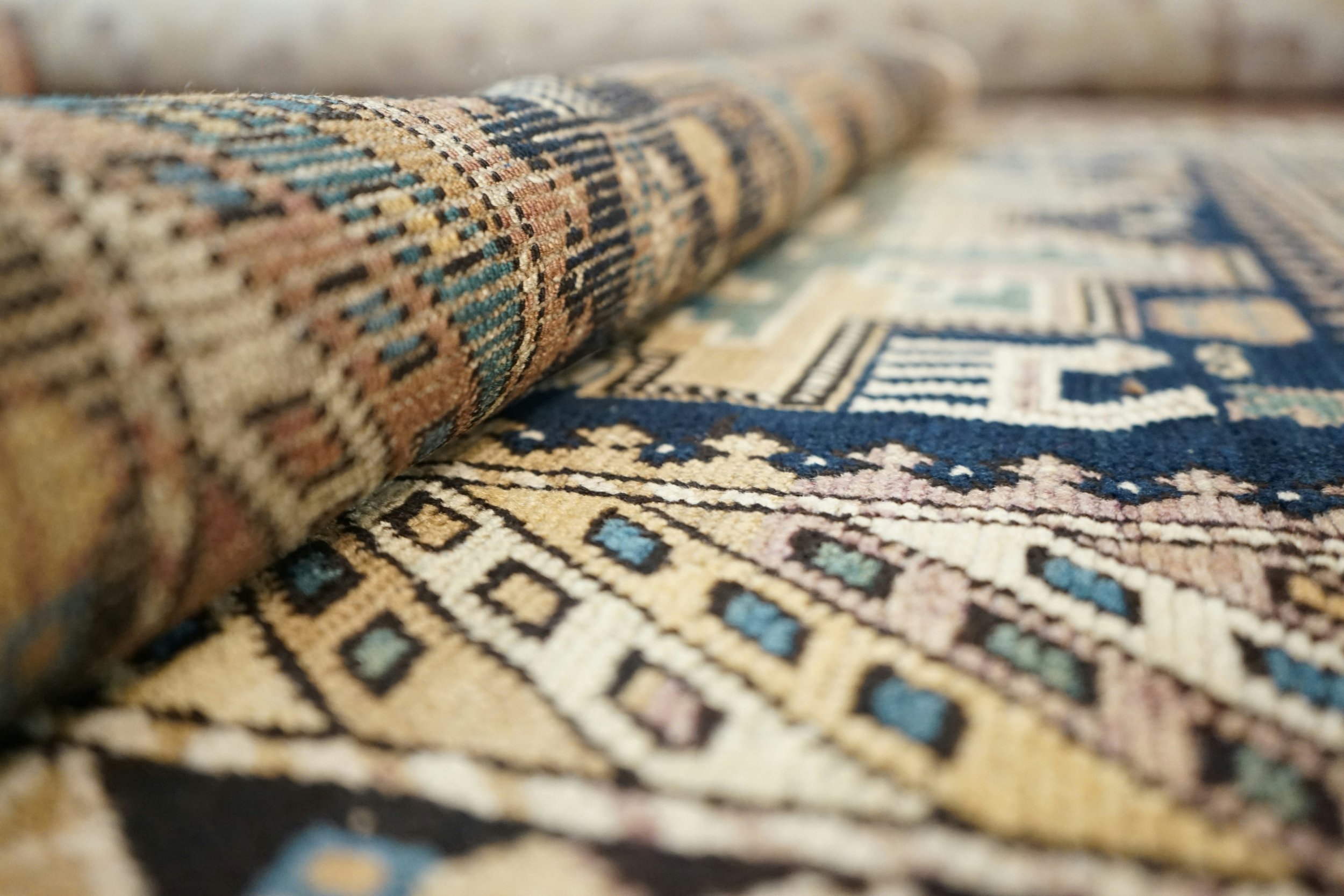Rug Placement Tips: Where and How to Position Your Rug for Maximum Impact
Enhance your home’s style with these rug placement tips, showing you where and how to position your rug for maximum impact and balance in every room.
Proper rug placement can make a world of difference in the look and feel of your room. Not only can the right rug tie a space together, but it can also define areas, add comfort, and enhance the overall aesthetic of your home. Let’s cover essential tips for positioning your rug to ensure it makes the most impact in your space. Whether you're looking to create a cosy living area or a functional dining space, these tips will help you get it just right.
Understanding Room Layouts
Living Room
In the living room, the rug serves as the foundation for the seating area. Ideally, your rug should be large enough to fit under the front legs of all major pieces of furniture. This helps to create a cohesive look and ensures that the rug feels integrated into the room. Centre the rug in the seating area to achieve balance and harmony. Click on the link for help with the rug size for living room.
Dining Room
For the dining room, the rug should extend beyond the edges of the dining table and chairs. This allows for easy movement of chairs and prevents them from catching on the rug’s edges. Aim for a rug that provides ample space for dining, creating a comfortable and stylish area for meals.
Bedroom
In the bedroom, place the rug so it extends beyond the bed on all sides. This creates a soft, inviting landing area and enhances the overall comfort of the room. Position the rug to make it easy to step out of bed onto a plush surface, adding warmth and style to your sleep space.
Hallways and Entryways
Hallways and entryways can benefit from rugs that add both style and function. Choose a rug that fits the length of the hallway or entryway and complements the space. This not only provides a welcoming touch but also helps to protect high-traffic areas.
Choosing the Right Size
Oversized Rugs
Large rugs can unify a space, especially in open-plan areas. They help to anchor furniture and create a sense of continuity. An oversized rug can accommodate multiple furniture pieces, making it ideal for living and dining areas where you want a cohesive look.
Medium-Sized Rugs
Medium-sized rugs are perfect for defining specific zones within a room. They offer flexibility and can work well in areas like seating arrangements or dining spaces without overwhelming the room. Ensure the rug is large enough to cover the area around the furniture for a balanced appearance.
Small Rugs
Small rugs can add accents and define smaller areas or features within a room. Use them to highlight specific areas like a reading nook or under a coffee table. While small rugs may not serve as the main focal point, they can still enhance the room’s overall style.
Placement Tips for Different Room Types
Living Rooms
Ensure the rug is large enough to encompass the entire seating area, with at least the front legs of the furniture on the rug. This helps to create a well-defined space and prevents the room from looking disjointed. Centre the rug within the seating area to maintain visual balance.
Dining Rooms
Position the rug so it extends beyond the dining table, allowing for easy movement of chairs. A good rule of thumb is to have at least 60-80 cm of rug around the table’s perimeter to ensure comfort when dining and standing.
Bedrooms
In the bedroom, the rug should extend beyond the bed by at least 60-90 cm on each side. This not only adds a touch of luxury but also provides a warm, soft surface to step onto in the morning.
Home Offices
In a home office, use a rug to define the workspace and add a touch of comfort. Position it under the desk and chair area to create a defined work zone and add warmth to the room.
The Benefits of a Rug for Living Rooms and Bedrooms
Have you thought about adding a rug to your living room or bedroom? These are the most popular rooms in the home where a rug can be beneficial. You can put them at the side of your bed or in front of your sofa. The idea is that you can walk on them barefoot and enjoy their design. Let’s take a look at the benefits you can enjoy when you add a rug to your living room and bedroom.
Creates Comfort
There are some rooms in your home where you want to relax and feel comfortable. Indeed, the living room and bedroom are two of these places. You want to feel at home here, making sure you choose colours and textures that are going to make you feel good. The great thing about a rug is that this can be a soft and comforting item you can have on the floor. It can add warmth to a hardwood floor and even make a carpet feel better underfoot. Either way, you’re creating comfort in rooms where you want to unwind after a long day.
Adds Insulation
We all know that energy bills are going up, and they don’t seem to be slowing down. This means that you can benefit from making tweaks to your home. Know that rugs can be great insulating accessories you can add. They can trap the heat during the winter, which can allow you to feel comfortable. You’d be surprised at the difference these accessories can make just looking at a room and in a practical sense.
Enhances Style
Do you have a certain theme or colour scheme in your living room or bedroom? Know that you can enhance this when you buy a rug. This is a simple yet effective way to add colour or patterns to a room. So, not only do you have a warm and cosy vibe, but you can also enhance the style and feel good about the room. There are so many different colours and patterns available that you can create whatever design you want to.
Conclusion
Thoughtful rug placement can transform the look and functionality of your room. By considering the layout, size, and placement of your rug, you can enhance your space and create a more inviting and stylish environment. Experiment with different positions to find what works best for your home and enjoy the impact a well-placed rug can make.




